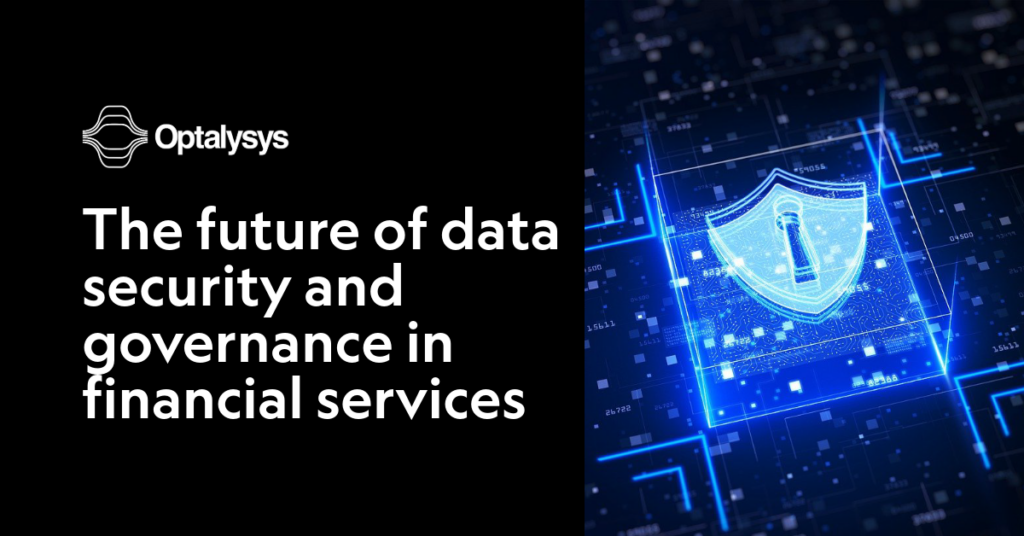
Blockchain and its security challenges
Understand the basics of blockchain, its security issues, and how privacy-enhancing technologies are addressing challenges and shaping its future.
What is blockchain?
At its core, blockchain is a shared digital ledger that organises information, such as financial transactions, into “blocks.” Each block is linked to the previous one using a unique code and a timestamp, creating a secure and unchangeable chain. Because this system is decentralised – meaning no single person or organisation controls it – it is more secure and less prone to failure than centralised systems. For example, in a centralised system like a bank, all transactions and account information are managed by the bank itself, making it a single point of control and potential failure.
Why is blockchain valuable?
Blockchain offers a way of storing information that is different to the way that information is usually stored. Many organisations will collect and store data, but sharing data safely is very hard. By contrast, blockchains are a way of reliably storing information that makes it easy to share. This means that blockchains offer a powerful data management alternative for use-cases where information sharing is necessary – besides currency and financial transactions, blockchains can be used to store records relating to supply chains, inventories, identity and more.
Understanding Blockchain Through Bitcoin
Bitcoin, the most well-known cryptocurrency, operates on a blockchain and highlights some key benefits:
- Transparency: All Bitcoin transactions are recorded on the blockchain and can be viewed by anyone on the network, helping to verify their legitimacy.
- Immutability: Once a Bitcoin transaction is added to the blockchain, it cannot be changed or removed. This is enforced through special coding and consensus among network participants.
- Security: Bitcoin uses a system called Proof of Work (PoW), where miners solve intensive math problems to confirm transactions. This process secures the network and helps prevent fraud. Other methods of securing blockchain networks based on less intensive resource usage also exist.
These features collectively make blockchain a great system for data storage, but they lack some key features that would make them suitable for many more applications.
Security Challenges
While renowned for its security, Blockchain is not immune to threats. In 2019 blockchain caused approximately $2.1 billion in economic damage (An Overview of Blockchain Security Analysis). We can assume the figures today are much higher. Let’s examine some of these issues behind the damage.
3 Common Threats to Blockchain Security
Privacy Issues Public blockchains are open for everyone to see, which can put sensitive information at risk. While this openness helps verify transactions, it also means personal data might be exposed. For example, if someone’s financial details are visible on a public blockchain, it could make them a target for attacks or identity theft.
Smart Contract Vulnerabilities Smart contracts are an important utility supported by some blockchains. Smart contracts are essentially agreements written in code that execute automatically. However, if there are bugs or security flaws in this code, it can be exploited by attackers. This could lead to significant financial losses and disrupt applications that rely on these contracts. A notable example is the 2016 DAO hack on Ethereum, where a flaw in the smart contract allowed hackers to steal $60 million worth of Ether. (Antier solutions). By keeping the information used in smart contracts confidential, it becomes harder for attackers to identify valuable smart contracts that could be targeted for exploitation.
Frontrunning When used to exchange market information, blockchains are also vulnerable to a malicious behavior known as frontrunning. Frontrunning also occurs in traditional markets, where brokers with advance knowledge of a large transaction that will affect the market will place their own trades first, seeking to benefit from the upcoming change in price. This practice is illegal on Wall Street, but in blockchain the transparency of information makes it hard to keep bot networks from manipulating markets.
Addressing these threats requires advanced security and privacy measures, and Privacy Enhancing Technologies (PETs) are making significant strides in this area.
3 PETs to Address Blockchain Privacy Challenges
Fully Homomorphic Encryption (FHE)
- What It Does: FHE allows calculations to be done on encrypted data without ever decrypting it. This keeps the data private and secure even while it’s being used.
- Applications: FHE is useful for safely processing sensitive information, running private smart contracts, and securely sharing data across different platforms.
- Example: Private Smart Contracts – In public blockchains that support smart contracts, FHE allows private information to be used in a smart contract without having to reveal it. This means transaction details remain hidden, keeping sensitive information private.
Zero-Knowledge Proofs (ZKPs)
- What It Does: ZKPs let one party prove something is true without showing any details about it. This confirms transactions without revealing their specifics.
- Applications: One of the biggest applications of ZKPs in blockchain lies in improving blockchain scalability by allowing blockchains to perform operations in parallel without losing their security properties.
- Example: Consider a blockchain-based voting system where voters want to prove they have the right to vote without revealing their identity or the vote itself. Using ZKPs, the system can confirm that a voter is eligible and has cast their vote correctly, while keeping the voter’s identity and the vote confidential.
Secure Multi-Party Computation (MPC)
- What It Does: MPC allows several parties to compute a result together without sharing their individual data. This keeps each party’s input private. There are several PET techniques for enabling SMPC, of which FHE is one.
- Applications: MPC is used for collaborative tasks like joint decision-making or data analysis, where privacy is crucial.
- Example: In a blockchain-based business partnership, MPC allows multiple companies to work together to set the best pricing strategy. Each company can contribute its private sales data for analysis, but the final strategy is determined without revealing any individual company’s data. This ensures that all parties can collaborate while keeping their sensitive information confidential.
Addressing Scalability with Silicon Photonics
FHE allows us to equip blockchains with the privacy needed to enable new applications, but faces critical scalability challenges on standard electronic hardware. Silicon photonics, which allows us to control light in micro-scale optical circuits built on silicon chips, offers a promising solution:
- High-Speed Processing: The properties of light allow us to perform the core math operations needed for FHE at the speeds required for scalability.
- Energy Efficiency: Provides significant power savings, crucial for managing the high computational needs of FHE.
- Scalability: Confidential blockchain networks created using PETs will require hardware that can be deployed at scale alongside other solutions to the broader problem of blockchain scalability.
Looking Ahead
Blockchain has revolutionised industries with its decentralised, transparent, and tamper-proof approach to data management. According to Gartner, blockchain could generate around $3.1 trillion in business value by 2030 and manage 10% to 20% of the global economic infrastructure. Despite this impressive growth, blockchain still faces significant security challenges.
We’ve only explored a few PETs in this article, but integrating them into blockchain networks can greatly improve privacy, scalability, and efficiency. As these technologies continue to evolve, they will overcome current limitations and pave the way for more secure and private decentralised systems.
At Optalysys, we accelerate Fully Homomorphic Encryption (FHE) with silicon photonics, pushing the boundaries of what’s possible in secure computing by enhancing speed, efficiency, and scalability
PRODUCT LAUNCH
LightLocker™ Node
The confidential blockchain server.
Absolute privacy. Unmatched performance. Effortless scalability.

EVENT
Get Ready to Meet Us at EthCC!
30th June – 3rd July 2025
Book a meeting to learn how Fully Homomorphic Encryption (FHE) can solve your data privacy challenges and open powerful new business opportunities.


